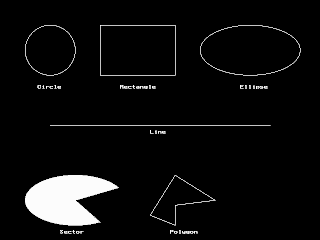Fish Movement
#include<stdlib.h> #include<conio.h> #include<dos.h> #include<graphics.h> #include<ctype.h> void main () { int gd=DETECT,gm; int newx= 0 ,newy= 0 ,inc_y= 5 ; initgraph(&gd,&gm, " " ); cleardevice(); while (!kbhit()) { ellipse( 520 -newx, 200 , 30 , 330 , 90 , 30 ); circle( 450 -newx, 193 , 3 ); line( 430 -newx, 200 , 450 -newx, 200 ); line( 597 -newx, 185 , 630 -newx, 170 ); line( 597 -newx, 215 , 630 -newx, 227 ); line( 630 -newx, 170 , 630 -newx, 227 ); line( 597 -newx, 200 , 630 -newx, 200 ); line( 597 -newx, 192 , 630 -newx, 187 ); line( 597 -newx, 207 , 630 -newx, 213 ); line( 500 -newx, 190 , 540 -newx, 150 +newy); line( 530 -newx, 190 , 540 -newx, 150 +newy); if (newx>= 500 ) newx= 0 ; if (newy>= 82 ) inc_y=- 5 ; newx=newx+ 5 ; if (newy<= 0 ) inc_y= 5 ; newy=newy+inc_y; delay( 50 ); cleardevice(); } cleardevice(); } Hope, i
